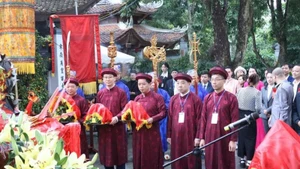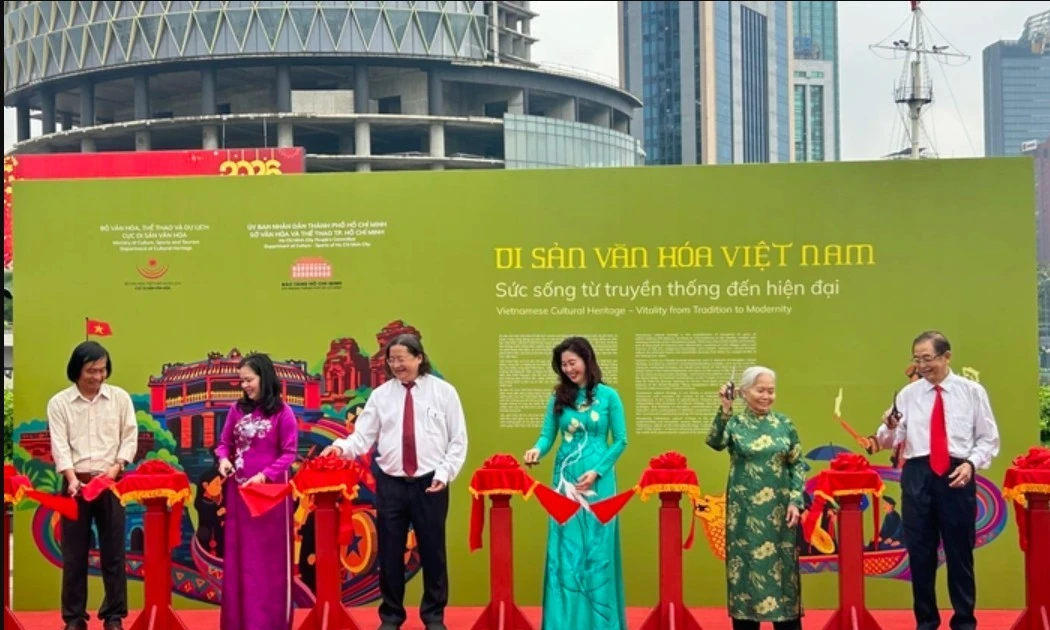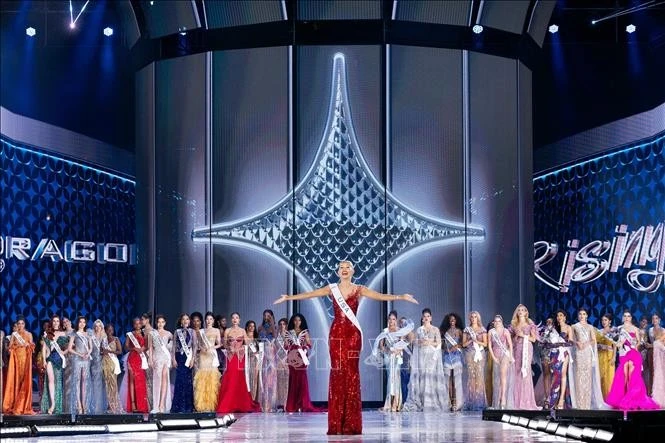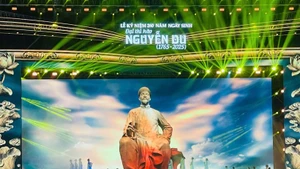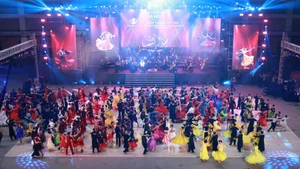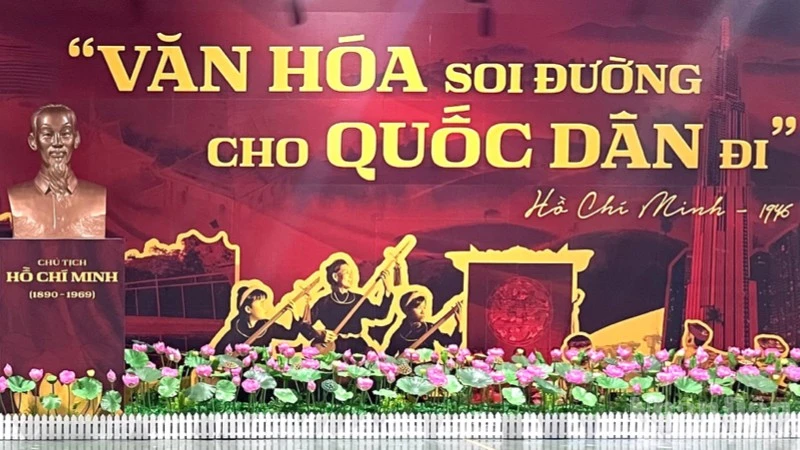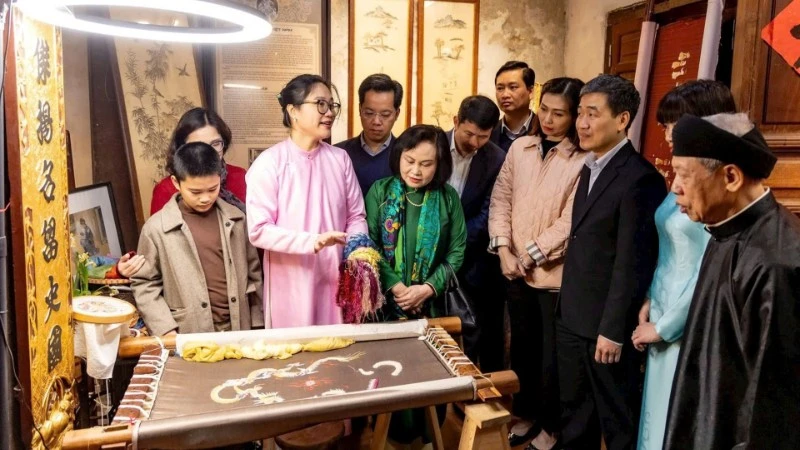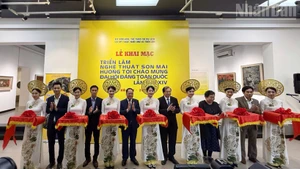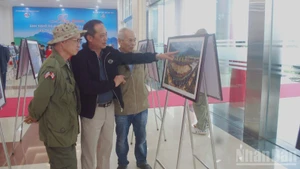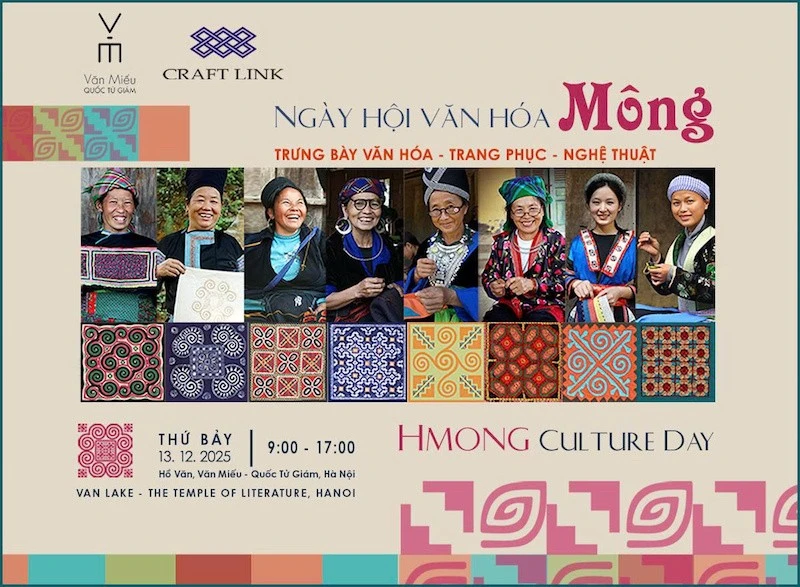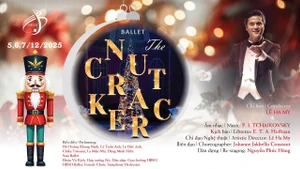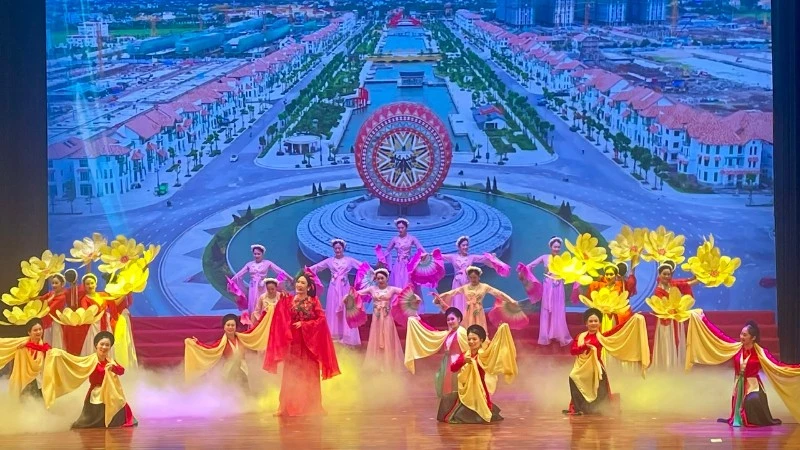In an exclusive interview with Thoi Nay (Present Day), a publication of Nhan Dan (The People) Newspaper), the artist shared deeper insights into this unique exhibition.
Q: Were you apprehensive about choosing Doraemon, a character so universally recognised, as the subject of your derivative artworks?
Artist Phan Tu Tran: I’ve always loved comics—Doraemon in particular. The robot cat has the caring nature of a guardian, always looking out for others. I see myself reflected in that personality, so I wanted to use art to express something truly personal.
To me, "derivation" isn’t about replacement, but about rejuvenating traditional values. That’s why I didn’t feel afraid, just excited.
While Doraemon is a familiar character, I don’t recreate him exactly as he is. I interpret him through my own perspective. For example, I’ve reimagined Doraemon as female—even though the original character is male—and played with visual transformations to give audiences a fresh and playful experience.
Q: This isn’t your first Doraemon-inspired series. What sets this latest collection apart?
A: I want people following my journey to feel my personal and artistic growth in each new work. While the tone is still playful and humorous, this time I’ve embedded deeper reflections on art, culture, and life itself.
In this latest series, I show that even a childlike spirit, as it matures, begins to reflect deeply on social issues. At the same time, I incorporate traditional cultural motifs into these contrasts to create richer, more layered work.
That’s where the “Rebirth” concept comes in—depicting stark contrasts in life, but concluding with hope, faith, and a longing for peace.
In this latest series, I show that even a childlike spirit, as it matures, begins to reflect deeply on social issues. At the same time, I incorporate traditional cultural motifs into these contrasts to create richer, more layered work.
What I’m most excited about in this exhibition is my collaboration with organiser Thanh Tao. Together, we’ve created a range of derivative art products—bringing art out of the frame and into daily life in the most accessible way possible.
Q: Do you have a personal favourite from the exhibition?
A: In the Derivative series, I’m especially fond of the pieces inspired by the works of celebrated Vietnamese painters. ‘Dora Nu 1’ and ‘Dora Nu 2’ are derived from ‘Nu’ by the renowned Mai Trung Thu (1906–1980). ‘Dora by the Betel Vine’ and ‘Finding Dora’ reinterpret the painting ‘Co Gai Tre Ben Gian Trau’ (Young Girl by the Betel Vine) by the acclaimed Le Pho (1907–2001).
From the Rebirth series, I love the piece titled ‘Light’. It features symbols of Eastern culture—lanterns, fish—set against a background inspired by a famous figure from Van Gogh. The work carries a message of guidance and illumination for everyone.

Q: What have been the biggest advantages and challenges in pursuing derivative and rebirth-themed art?
A: My greatest strength lies in how naturally I can express emotion through this approach. By deriving one piece from another - be it an artwork or a character - I’m able to embed fresh intentions. The values of the past are like a treasure trove for future generations, offering infinite inspiration.
That said, the style is demanding. I insist on honouring the integrity of the original works. I never wish to distort them or depart from the cultural foundation of Viet Nam.
Artists working in this genre must constantly evolve, while maintaining the soul of the past.
Looking ahead, I plan to invest more in the Rebirth direction, combining diverse materials - both classical and modern - to develop work with greater depth. I’m also passionate about community-based art initiatives, especially those aimed at teenagers and young adults, to show that art truly knows no boundaries.
Thank you for sharing!

